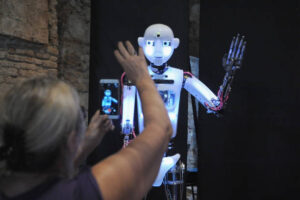Are you curious to know the difference between stem vs steam education? Have you been wondering about the addition of ‘A’ in the acronym? Firstly, STEAM represents Science, Technology, Engineering, Art, and Mathematics. These respective fields of study have created a series of advancements in the educational sector in many developing countries.
They have been the buzzwords in the educational system for many years. Recently there has been a push to widen the impact of the student’s academic curriculum by including specific areas which would be discussed subsequently in this article.
Educators, policymakers as well as parents have sparked a series of debates that have led many educational stakeholders to debate between these two acronyms, ‘STEM’ and ‘STEAM’.
The focus on these acronyms is driven by the need to prepare students for a career in academic fields of studies in science and technology.
STEM Vs STEAM Education
STEAM/STEM education focuses on teaching students the foundational principles of science, technology, engineering, art, and mathematics.
This aims to equip students with the skills needed to succeed in fields such as computer science, engineering, healthcare, and many more.
STEAM/STEM programs aim to provide students with a hands-on approach to learning through problem-solving and critical thinking.
STEAM/STEM education according to Research Gate has improved the students’ analytical and quantitative reasoning skills, it has also increased the pipeline of future workers for high demands in STEM/STEAM fields.
See also: 8 Best Coding Games for Kids that Teach Real Programming Concept
What is STEM Education and How Does it Differ from STEAM Education?
STEAM education stands for science, technology, engineering, and mathematics.
STEM education creates an interdisciplinary approach to education that focuses on subjects whose goals are to prepare students for their future careers in related fields.
According to UNESCO in 2019, STEM education promotes analytical thinking in students through their knowledge of numeracy, mathematical principles, and scientific principles, as well as the understanding of empirical data.
STEM focuses on the development of practical skills and knowledge that can be applied to real-world situations.
STEAM education, on the other hand, stands for Science, Technology, Engineering, Art, and Mathematics.
This concept is an expansion of STEM education that includes an additional focus on the arts as a major course. The goal of STEAM education is to incorporate arts into STEM subjects to enhance creativity, innovation, and critical thinking.
Art is an essential component of STEAM education because it provides a unique way of teaching students to think creatively and solve problems in unconventional ways.
The STEM and STEAM education differs primarily in their approach to education.
STEM education emphasizes the development of practical skills and the knowledge of science, technology, engineering, and mathematics, while STEAM education focuses on the integration of arts into subjects that foster creativity and innovation.
STEM education is more traditional in its approach, while STEAM education is more innovative.
Benefits of STEM and STEAM Education
STEM education has various benefits and students who participate in STEM gain a broad range of skills that are in high demand in the workforce, such as critical thinking, problem-solving, and analytical reasoning.
STEM education also prepares students for a future career in the fields of computer science, engineering, and many more.
The benefits of STEAM education are also significant. Through the incorporation of arts into STEM subjects, students can develop a broad range of skills, including creativity and innovation. STEAM education can also help bridge the gender and diversity gap in the STEM field by making STEM education more accessible and engaging for underrepresented groups.
The two educational approaches STEM and STEAM have independent benefits and drawbacks. The best approach depends on the student’s interests, abilities, and their career goals.
See also: Top 15 Best Computer Programming Schools For Kids in Nigeria
What Does the “A” in STEAM stand for, and why is it included in the acronym?
The A in STEAM as an educational field stands for ART. The acronym, emphasizes the importance of Art in education and how art fosters creativity and innovation amongst students of different age groups.
STEM education focuses on science, technology engineering, and mathematics. This educational field overlooks the importance of Art as a subject, however, it plays an integral part in creativity and innovation.
Adding “A” to STEM creates the steam approach which encourages interdisciplinary learning and problem-solving among students.
The Importance of Art in STEM Education – STEAM
Art education provides students with the essential skills for success in the 21st century. These skills include Critical thinking, communication, collaboration, creativity, and many more.
Through the incorporation of Arts into STEM education, students can develop these skills and apply them to real-world challenges.
For example, a STEAM project that involves students in developing sustainable and environmentally friendly products would require students to use their knowledge of science, engineering, and technology to develop a functional design while also including aesthetic elements from art to demonstrate the social and cultural implications of the product.
Incorporating Arts in STEM education also helps to broaden the participation of students in the field of sciences thereby making subjects more accessible and engaging to a wider range of students and age groups.
Including students who do not have an interest in these science-related fields of study.
Art can serve as a bridge that connects other commercial areas of education to STEM subjects, thereby helping students foster a love for learning and curiosity.
Some Examples of Activities or Subjects included in STEM Education
STEM education encompasses a wide range of activities and subjects that focus on Science, Technology, and Mathematics.
The following are students, courses, and a list of activities that are embedded in the STEM curriculum;
- Robotics: Robotics is a field of study that combines engineering, computer science, and mathematics. Students who enroll in robotics as a course will learn about the design, programming, and operation of robots through hands-on activities and competitions.
- Coding: Coding is an essential skill in this digital age. Many STEAM programs include coding as a core component. Students can learn programming languages such as Python, Java, and C++ to develop software and applications.
- Maths and Statistics: Mathematics is a fundamental component of STEM education. Students can learn about algebra, geometry, calculus, and statistics to apply mathematical principles to real-world problems.
- Science Experiments: STEAM education includes a range of science experiments that help students understand scientific concepts and principles. Students can conduct experiments in biology, chemistry, physics, and environmental sciences.
- 3D-printing: 3D-printing technology allows students to create three-dimensional objects using computer-aided design (CAD) software. Students can learn about engineering and design through 3D printing projects.
- Renewable energy: Renewable energy is an area of study that focuses on alternative sources of energy such as solar, wind, and hydropower. Students can learn about the science behind renewable energy and design and build their own renewable energy systems.
- Aerospace: Aerospace engineering is a field of study that focuses on the design, construction, and operation of aircraft and spacecraft. Students can learn about aerodynamics, material science, and space exploration through STEM programs.
- Game Design: Game design is an area of study that combines technology, art, and programming. Students can learn about game development and design their own games using software such as Unity or Unreal Engine.
See also: Top 10 Benefits of Coding and Robotics Education for Kids
How can Educators Include Arts in STEM Education Effectively?
Integrating Arts into STEM education can be a powerful way to enhance creativity, innovation, and critical thinking skills in students.
However, it can be challenging for educators to effectively integrate Arts into a STEM educational system. The following are some strategies that educators can use to successfully incorporate Art into STEM education;
Use Project-Based Learning
According to PowerSchool, Power-based learning is an effective way to integrate Art into STEM subjects. By designing projects that require students to use both STEM and artistic skills, educators can create a more holistic learning experience. For example, students can design and build robots that incorporate artistic elements such as sculpture or painting.
Use Visual Aids
Incorporating visual aids such as drawings, diagrams, and infographics can help students better understand complex STEM concepts. Educators can encourage students to create their own visual aids that incorporate artistic elements to help them better understand STEM concepts.
Use of Multimedia
A multimedia presentation that includes videos, audio, and images can be an effective way to engage students and help them understand STEM concepts, Educators can encourage students to create their own multimedia presentations that incorporate artistic elements such as music and animation.
Encouraging Creativity amongst Students
Encouraging creativity is an essential component of successfully integrating arts into STEM education. Educators can create opportunities for students to explore their creativity through projects, activities, and assignments that allow artistic expression.
Use Cross-Curricular Activities
Cross-curricular activities that integrate STEM and Art subjects can be an effective way to enhance students’ learning.
For example, students can create a math-themed project that incorporates geometric shapes and patterns.
See also: Top 6 Benefits of Robotics for Kids with Disabilities
Use Artistic Thinking Strategies
Educators can teach students to use artistic thinking strategies such as brainstorming, ideation, and prototyping to enhance the problem-solving and critical thinking abilities of students.
Art is a powerful motivator, it encourages students who may not be interested in traditional STEM subjects to engage with the material in a new way.
Additionally, STEAM education helps to bridge the gap between gender and diversity in the STEM field by making STEM education more accessible and engaging for underrepresented groups.
Despite the potential benefit of STEAM education, a few critics argue that it dilutes the focus on STEM subjects and may not provide students with the in-depth knowledge needed to succeed in these fields.
Some also argue that the addition of arts may distract students from the rigor of STEM education and that it may be difficult to implement effectively in the classroom.
Conclusion
In this article, we have successfully explored the key differences in STEM vs STEAM education, as well as the potential benefits and drawbacks of each approach.
We have also examined how educators can implement STEAM education in their classrooms.
Ultimately, the debate of STEM vs STEAM education boils down to the question of what skills are necessary for students to succeed in today’s modern workforce.
Is a focus on Science, Technology, Engineering, and Mathematics enough, or do students need a broader set of skills that includes art? Just as we have seen, the answer to this is not straightforward, and the best approach may vary depending on the student’s interests, abilities, and career goals.
Frequently Asked Questions
The simple difference is that STEM education focuses on Science, Technology, Engineering, and Mathematics, while STEAM education incorporates the arts into these subjects, adding an “A” for arts as seen in the acronym.
Integrating arts into STEM education can help students develop their creativity, critical thinking, and problem-solving skills. It can also increase engagement and students’ interest in STEM subjects, particularly for students who may not initially be drawn to these areas.
STEM education can provide students with the skills and knowledge necessary to succeed in a wide range of careers in fields such as engineering, computer science, medicine, and more. It can also foster innovation, critical thinking, and problem-solving skills that are valuable in many areas of life.
Teachers can integrate arts into STEM education in a variety of ways such as through project-based learning and cross-curricular activities.
The career opportunities available to students who pursue STEM or STEAM education are vast and varied, ranging from fields such as engineering, computer science, and mathematics to art, design, and architecture. By providing students with a strong foundation in STEM and STEAM education, they can develop the skills and knowledge necessary to succeed in a rapidly changing job market.




